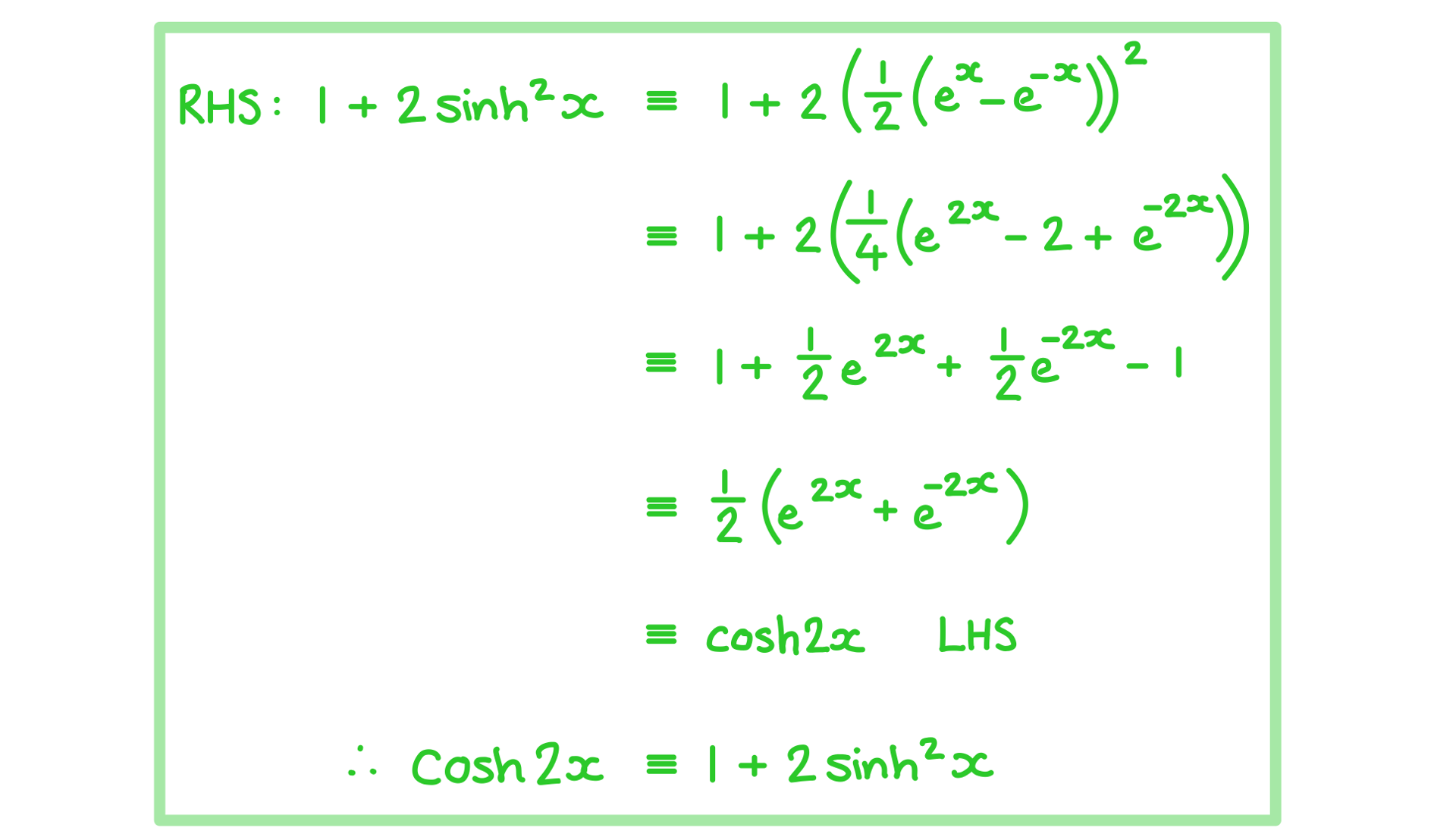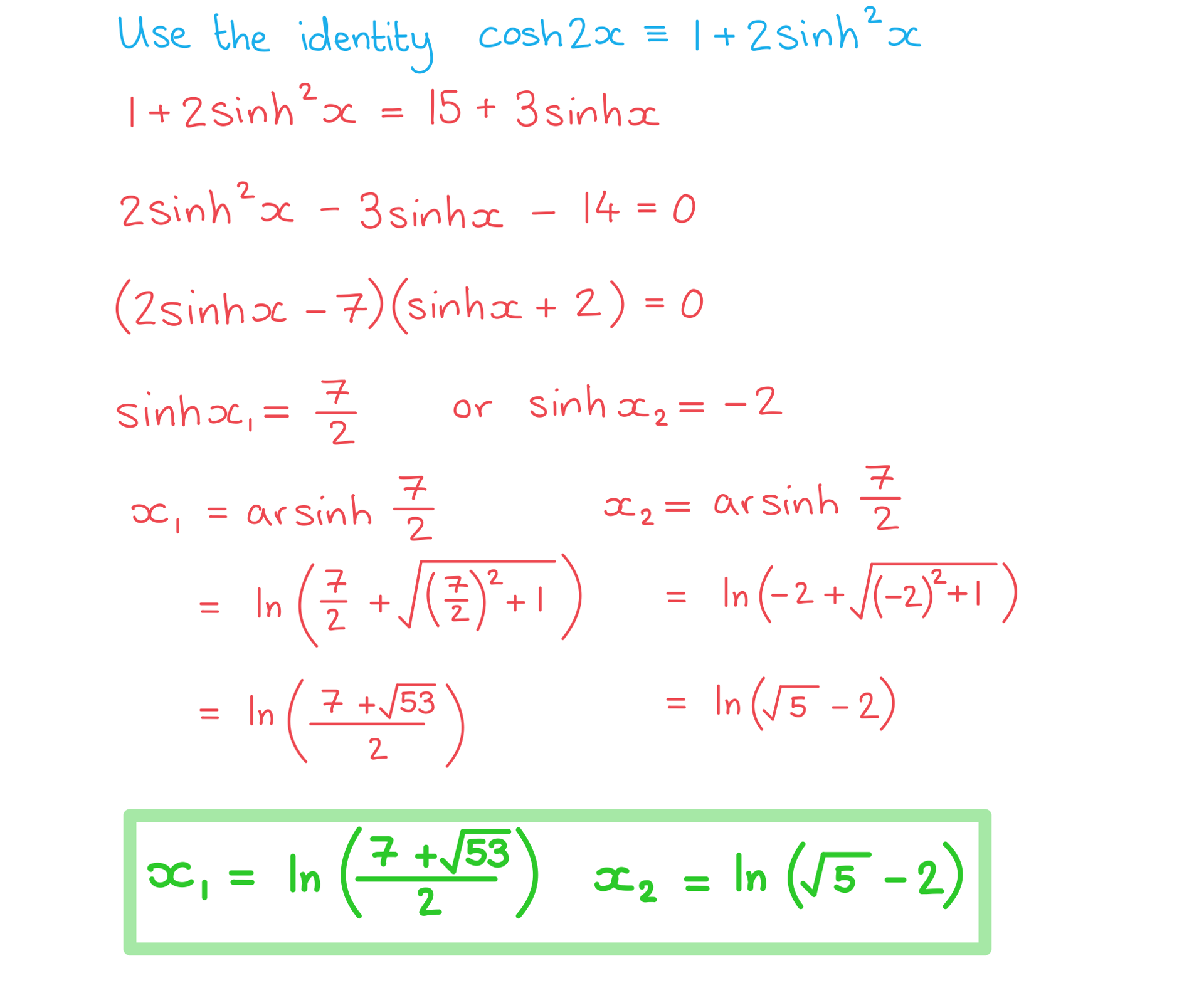- 翰林提供学术活动、国际课程、科研项目一站式留学背景提升服务!
- 400 888 0080
Edexcel A Level Further Maths: Core Pure:复习笔记4.1.3 Hyperbolic Identities & Equations
Hyperbolic Identities & Equations
Are there identities linking the hyperbolic functions to the circular trig functions?
- Yes - these can be seen using de Moivre's Theorem to write
- Compare these with the definitions for the hyperbolic functions
- Therefore they can be related using the identities
What are the hyperbolic identities?
- In general, the hyperbolic identities are the same as the circular trigonometric identities except where there is a product of an even number of sinh terms, in which case the term changes sign
- e.g.

- This is referred to as Osborn’s Rule
- This occurs because of the connection with the imaginary number i
- e.g.
- All the circular trigonometric identities can be used with hyperbolic functions
- The main hyperbolic identities you are likely to need are



- These are listed in the formulae booklet
- Other identities include
- The harmonic identities can also be used with hyperbolic functions
- Hyperbolic identities involving tanhx exist
- They are not normally used as it is easier to use sinhx, coshx and their definitions
- If you do use tanhx identities, be careful with implied or ‘hidden’ products of sinhx (e.g. tanh2x)
- You can prove these identities by using the definitions of the hyperbolic functions in terms of e
Do reciprocal hyperbolic functions and identities exist?
- Yes! However, It is usually easier to deal with identities and equations involving these in terms of sinhx, coshx and their definitions
 (Pronounced “coshec”)
(Pronounced “coshec”) (Pronounced “shec”)
(Pronounced “shec”) (Pronounced “cough”)
(Pronounced “cough”)
How do I use hyperbolic identities to prove other identities?
- Start with the LHS and use the hyperbolic identities to rearrange into the RHS
- This approach can lead to what seems like a dead-end
- In such cases simplify the LHS as far as possible, ideally so that it is in terms of sinhx and/or coshx only
- Then use the sinhx and coshx definitions to write the LHS in terms of e
- Repeat this for the RHS so that the LHS and RHS ‘meet in the middle’
How do I solve equations involving hyperbolic functions?
- Use identities to create an equation in terms of sinhx or coshx only
- This should be a familiar equation to solve – linear, quadratic, etc
- Find exact answers in terms of natural logarithms
- Using the inverse hyperbolic functions definitions
- Use your calculator if exact answers are not required
- As with circular trigonometric equations, do not cancel hyperbolic terms, rearrange so the equation equals zero and factorise
- When solving equations be careful when solving coshx = k (for constant k)
- cosh-1x is not necessarily the same as arcoshx
- arcoshx is, strictly speaking, referring to the inverse function of coshx such that coshx is a one-to-one function
- Using the graph you can see that the for k>1 there are two solutions to


- This can be written in logarithmic form as

- This can be shown to be equivalent to

- If k=1 then the only solution to
 is x=0
is x=0 - If k<1 then there are no real solutions to

- cosh-1x is not necessarily the same as arcoshx
Exam Tip
- You can use the A Level Maths section of the formula booklet to remind you of trigonometric identities (such as sin(A±B)) which you can then adapt for the hyperbolic trig functions – don’t limit yourself to just the Further Maths section
Worked Example
a) Using the definitions of  prove the identity
prove the identity  .
.

b) Find the real solutions, as exact values, to the equation  .
.

转载自savemyexams

早鸟钜惠!翰林2025暑期班课上线

最新发布
© 2025. All Rights Reserved. 沪ICP备2023009024号-1








